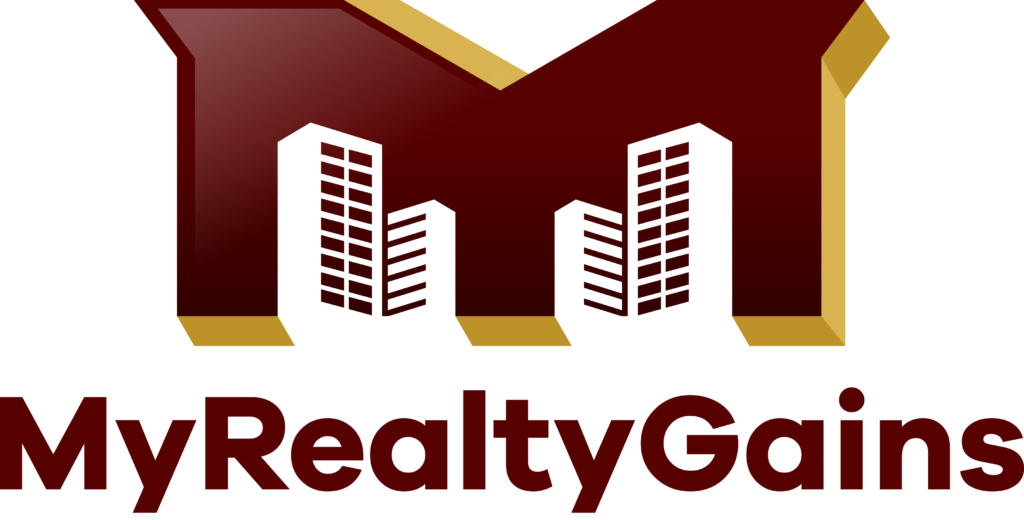Prashant Kumar, CCIM - Founder, MyRealtyGains
 In 2012, Reed quit his job in Australia and moved half way across the globe to the US to change his life, and to chase a dream. With limited funds, no investing experience, and no credit, Reed went from purchasing a small duplex to growing his own real estate investing firm, RSN Property Group. Reed now syndicates large multi-million dollar deals across the U.S. His portfolio is worth over $650MM. He has achieved financial freedom and taken control of his life. Reed is also the host of the successful podcast, Investing in the US wherein he invites other distinguished real estate investors and entrepreneurs to speak with him about their success and help guide other investors who want to
In 2012, Reed quit his job in Australia and moved half way across the globe to the US to change his life, and to chase a dream. With limited funds, no investing experience, and no credit, Reed went from purchasing a small duplex to growing his own real estate investing firm, RSN Property Group. Reed now syndicates large multi-million dollar deals across the U.S. His portfolio is worth over $650MM. He has achieved financial freedom and taken control of his life. Reed is also the host of the successful podcast, Investing in the US wherein he invites other distinguished real estate investors and entrepreneurs to speak with him about their success and help guide other investors who want to
successfully invest in the U.S.
Reed is also a best-selling author with two books now on Amazon: Investing in the US – The Ultimate Guide to US Real Estate, & 10,000 Miles to the American dream.
What You’re Going to Learn:
- How technological background is a boon in Real Estate Industry?
- Create a better future through Real Estate Investing
- What kind of Returns Rate do you see in Real Estate Investing?
- What are the different asset classes in Real Estate to Invest in and Why?
- How much time do people need for Passive Investing in Real Estate?
- Common traits of a successful operator in Real Estate Industry
Listen to or Watch the Full Podcast Here
Click on any platform below to listen
Show Highlights
How technological background is a boon in Real Estate Industry?
How technological background is a boon in Real Estate Industry?
Prashant Kumar, CCIM – How to motivate people to Invest in Real Estate?
Reed Goossens – I think it starts with someone who wants to know more. I remember joining a civil engineering firm company and just feeling like a small cog in a big machine. And that for me was my driving force.
I encourage people to listen to this show. If they’re listening to the show, they already know. They’re already thinking about something more. They see them, their friends, and they see the other friends and family colleagues Investing in Real Estate. They want to be able to create a better future for themselves and their family. There’s just a little grain of salt. It’s starting to perambulate into a big beach and the big beach is going to be all these ideas. I say lean into it. What I mean by leaning into it is, that when you get started, it starts from curiosity. You have to be curious about something because otherwise, you wouldn’t want to go and do it because going down this path means you’ve got to educate yourself. We’re not talking about the traditional ways of going to university, getting a job and getting working forever, and then retiring. I’m talking about going out and increasing your financial IQ. Listening to these podcasts, understanding what a PNL looks like, how a PNL work, what cash flow means, and understanding what your financial goals are.
Once you start understanding that you can then back to where you want to place your money. Traditionally, stocks and bonds or alternative assets like physical assets, Real Estate assets.
Why would you invest in physical assets?
We can talk all about that sort of stuff. This is why you listen to the show cash Flow, Amortization, Appreciation and Tax Benefits. In today’s world where the stock market is going nuts. You invest in hard assets in an inflationary environment. Paper assets can be good for a part of your portfolio but investing in hard assets helps protect you against inflation. If your money is in the stock market now, well, there’s high inflation. Inflation is at like 78% per month. I think it was the other day. If you waited a year on a million dollars, that’s not worth a million dollars anymore because inflation is eating away at that cash sitting in the bank.
If it was in a physical asset. It is like a piece of Real Estate, like a multi-family deal. In a year it’d probably be worth even more because it’s an inflationary hedge. Even if I bought a multi-family deal today, Prashant and I made no money on it, but I sold it for what I bought it from and got my money back in three years. Well then hadn’t lost any money through inflation. All these benefits are about why we invest in Real Estate. But it boils back to increasing your financial OQ. Having that curiosity to go out and start learning about something.
Create a better future through Real Estate Investing
Create a better future through Real Estate Investing
Prashant Kumar, CCIM – How one should be able to use that kind of saving potential to create a better future for themselves?
Reed Goossens – It’s all about you’ve been taught to invest in a broker. A broker is a stockbroker who will take your money and put it into some savings or some stocks. That is just you sort of handing over money.
You don’t know where it’s going, you don’t know why it’s going to a certain stock. You don’t know the earning potential of a certain stock and that’s stockbrokers, they get paid to place money. So having control and going back to the curiosity, making sure that you understand why your money is being invested in certain areas.
If you go out and invest in a Passive deal, in a piece of Real Estate. We invest $50,000 every six months, over three or four years, you probably have seven or eight different investment streams, which means you’re diversified across different assets in terms of diversified across different geographical locations. You’re protected against downturns because you are in particularly multifamily what we do, or in senior living, you’re in a product that people need. We provide affordable housing or workforce housing. There is a limited supply of that and everyone needs food and shelter. We’re investing in things that people need and that will continue to be in need for 20 years or 100 years.
Unlike other Investments that are out there investing in the latest tech fund or the latest tech gadget that might be consumed or taken over by another piece of tech in the future. And so understanding what it is and having a risk-adjusted return in certain Investment Classes, i.e. Stock market or i.e. Real estate. It is really important to understand where you want to place your capital for long-term growth. Again, it goes back to those goals about why you want to get why you want more out of your life.
Why do you want more than just a W2? Why do you want more than just your money sitting in the bank account and earning .02%? Because you want your money working for you, leaving the door out the door at the same time as you leave for work every day.
Your money is also out there working for you at the same time. If it is sitting in an account, understand where you can place it and then there are many options. We’re just talking about Real Estate. You can go buy businesses, you can buy investing in gold or commodity. There are so many different ways but the fundamental of it all is that you are understanding what you’re investing in to help you achieve your goals, your financial goals.
Prashant Kumar, CCIM – I like your examples.
What kind of Returns Rate do you see in Real Estate Investing?
What kind of Returns Rate do you see in Real Estate Investing?
Prashant Kumar, CCIM – What kind of returns rate do you see in your properties?
Reed Goossens – You maintain to 12% to 15% IRR. Cash flow is maybe around 6%-8% depending on the deals. We buy value at a deal, we come in, and we increase the value of the rent. It takes time, but over time, we increase that value. We can increase the cash flow. As the cash flow increases the value of the asset, we then sell the asset. Everyone makes money.
I think historically we’ve done over 20% IRRs. But moving forward, we always try to say to people we like to double their money every five years. If we can double someone’s money every five years, it’s roughly around a mid-teen IRR. Once you make money on that, we can then roll it over into another deal, and you can save on the taxes on that side as well. There are a lot of ways in which we want to make people money and a certain return and risk-adjusted returns. I will say Real Estate is slow and steady,
It’s not crypto. There are no highs and lows. You are slow and steady, winning the race. And that’s all you want in your long-term investments because you want to be able to go to sleep at night knowing that you don’t have to have one eye open thinking about what the hell is happening tomorrow with the latest trend on TikTok or crypto or a war going on in Ukraine.
How many years do you think that one should kind of save like that $50,000 a year?
As long as I think it goes back to that financial goal. Some people might just want, I don’t know, half a million dollars or a million dollars to save and then go retire to the Philippines or somewhere really cheap, or go down to Mexico and retire down there. It depends on really what your goal is. In general. I think if you’re still a full-time worker earning a good six-figure income, investing $50,000 a year into Passive Real Estate every six months is probably doable. If you did that for at least five years, you’ll set yourself up with an incredible nest egg that will continue to grow and grow and grow, because remember when you invest that first $50,000, it’s earning cash flow, but then it sells and it grows.
It might double its now $100,000, then you can reinvest that into another 1031 exchange into another deal. Now, that’s another $100,000 basis. You’re now going to grow that to $200,000 and that’s every single Investment, every single $50,000 you put out, it’s going to do the same thing. You’ve got to invest in the right deals, and then they’re sponsors and the right areas, but that high level, 30,000-foot level, that’s the idea of investing that $50,000 every six months.
What are the different asset classes in Real Estate to Invest in and Why?
What are the different asset classes in Real Estate to Invest in and Why?
Prashant Kumar, CCIM – What different asset classes do you choose to invest in and why?
Reed Goossens – I’m an owner-operator, I’m like you Prashant. I buy multifamily deals, I operate them. I have investors invest alongside me. I’m heavily in multifamily. That’s my niche but what I like to do is also be vertically integrated. Within the company, I have construction management, and we have asset management, we have institutional underwriting. We also do we source our materials directly from Asia in bulk. We reduce our costs.
I’ve been doing that for the last eight years that is all about creating vertical integration, or another word for it, a business ecosystem. When you’re looking for a sponsor, you’re looking for people to invest in. Understanding what their ecosystem looks like is powerful to help in making sure the investor knows that, they control the construction, they control the property manager, they control the supplies, or they control how they manage the asset.
They all are important because you make money when you buy, but you lose it through bad management. That includes both asset management and property management. Investing with the right team is important and understanding what that ecosystem looks like is extremely important.
To your point what other asset classes are there.
Assisted Living, we’re an ageing population. I get older every single day. Every time I get off this podcast, I’m going to be 30 minutes older than I was 30 minutes ago. People are getting older and there’s a need for decent care at a certain stage in life.
Another great resilient recession resilient asset class is self-storage. As consumers, we’re constantly getting more crap and houses are getting smaller and our living space is getting smaller, but we still seem to be consuming more stuff. We need to put it somewhere. Why don’t we put it in a shed and will pay someone who owns that shed to keep it there.
These are good asset classes to be Invested in. There are other asset classes like retail, hotels, parking structures, and mobile home parks. There are all these different asset classes out there in the Commercial Realm but understanding What the risk is for each of those asset classes is important. It goes back to what I mentioned earlier about multifamily or housing being a class that is going to be needed for decades, for centuries to come because we all need food and shelter.
I like to Invest in Multifamily and that’s what I built my business around, but I’ve also built the business within that, which is an ecosystem of making sure that I’m controlling all the facets of it. We manage the asset correctly and reduce our overall costs and help increase the ROI for our investors.
Prashant Kumar, CCIM – Your approach is to build, take one asset class, and kind of control it completely from all perspectives, whether it is construction management, property management, or security.
Reed Goossens – The best, I can.
Prashant Kumar, CCIM – I like that approach very much. The more and more focused you become, you end up having more and more expansion. I know it is a kind of conundrum, but for me, it is true also. When I can go deeper in one area, my knowledge increases tremendously, which potentially can be helpful in other areas also.
Reed Goossens – I will say that as a Passive Investor to your listeners out there, the beauty about what we do is that there are many other operators out there that do exactly what I do. I encourage everyone to listen to the show. If you want to be a Passive Investor, invest that $50,000. I will tell you to invest a little bit with me, invest a little bit with Prashant, invest a little bit with someone down the road, you get to then diversify.
We are experts in what we do, but as Passive Investors, we get to have the optionality of diversification across not only operators but different asset classes.
Maybe there’s a self-storage deal you might want to go look at. There’s a senior living. I know someone on this show who does senior living. There’s multifamily. Then you can get asset class diversification within your little portfolio. And again, it’s all under the guise of commercial Real Estate, but it’s just another example of why it’s good for operators to be an inch wide and a mile deep but as a Passive Investor, you can spread out your risk across many operators and many asset classes.
Prashant Kumar, CCIM – Awesome.
How much time do people need for Passive Investing in Real Estate?
How much time do people need for Passive Investing in Real Estate?
Prashant Kumar, CCIM – How much time do people need for Passive Investing?
Reed Goossens – You have to spend wisely, you can’t be foolish, their money is easily parted. You have to spend some time each week devoted to if you want to learn more about a certain craft, ie. Investing, it’s going to take some time in your life. I would say if you could spend between five or 10 hours a week, or an hour a day. Listening to podcasts, reading books, understanding what an Investment Summary looks like, understanding what a private placement memorandum is, all these things you’re going to need to understand why there are risks in certain areas and why certain Investors are buying in certain pockets of the country and understanding that. If you spend again an hour each day just slowly moving the needle for the education forward, I bet you in six months you’ll be complete. You’ll have all the tools in your tool belt to go out and make a Smart Investment decision to Invest with an Operator who you like and who you trust.
Prashant Kumar, CCIM – 1 hour a day for six months to learn about where you want to Invest. Connecting with people, connecting or building a relationship with them because many times these deals are 506B and you have to have a stronger relationship with an operator. You cannot just go and invest with them as you see the deal. 1 hour a day for six months and $50,000 per six months over the next five years will bring financial freedom. I think that the message we are getting from you.
Common traits of a successful operator in Real Estate Industry
Common traits of a successful operator in Real Estate Industry
Prashant Kumar, CCIM – How do you differentiate? What are the traits of a successful operator as compared to the one who has not grown to that level?
Reed Goossens – I was a startup operator back in the day. I remember approaching my first Investors and saying, please invest with me today. I have people batting down my door. They want to Invest with me because I have a track record now. I think the fundamental thing comes down to and this goes back to where you can go as a Passive Investor. You can go out and interview many different operators and you should do that because you want to be able to invest with people you want to do business with. The first thing that people invested with me when I asked for my first dollar back in the day for my first deal, they’re investing in me first and foremost. The deal is secondary. You have to invest in the operator. And do you trust the operator? Do they have integrity?
They need to have some track record, but some operators don’t. They’re just starting out. That’s how you get to know, learn and trust who they are is important because you want to be able to look that person in the eye and say, I’m going to be Investing my hard-earned money with you. Do I trust you?
That’s the biggest thing it comes down to his trust. Even in good times and in bad times, you want to be able to know that that operator has your money. They treat your money better than they treat their own money.











